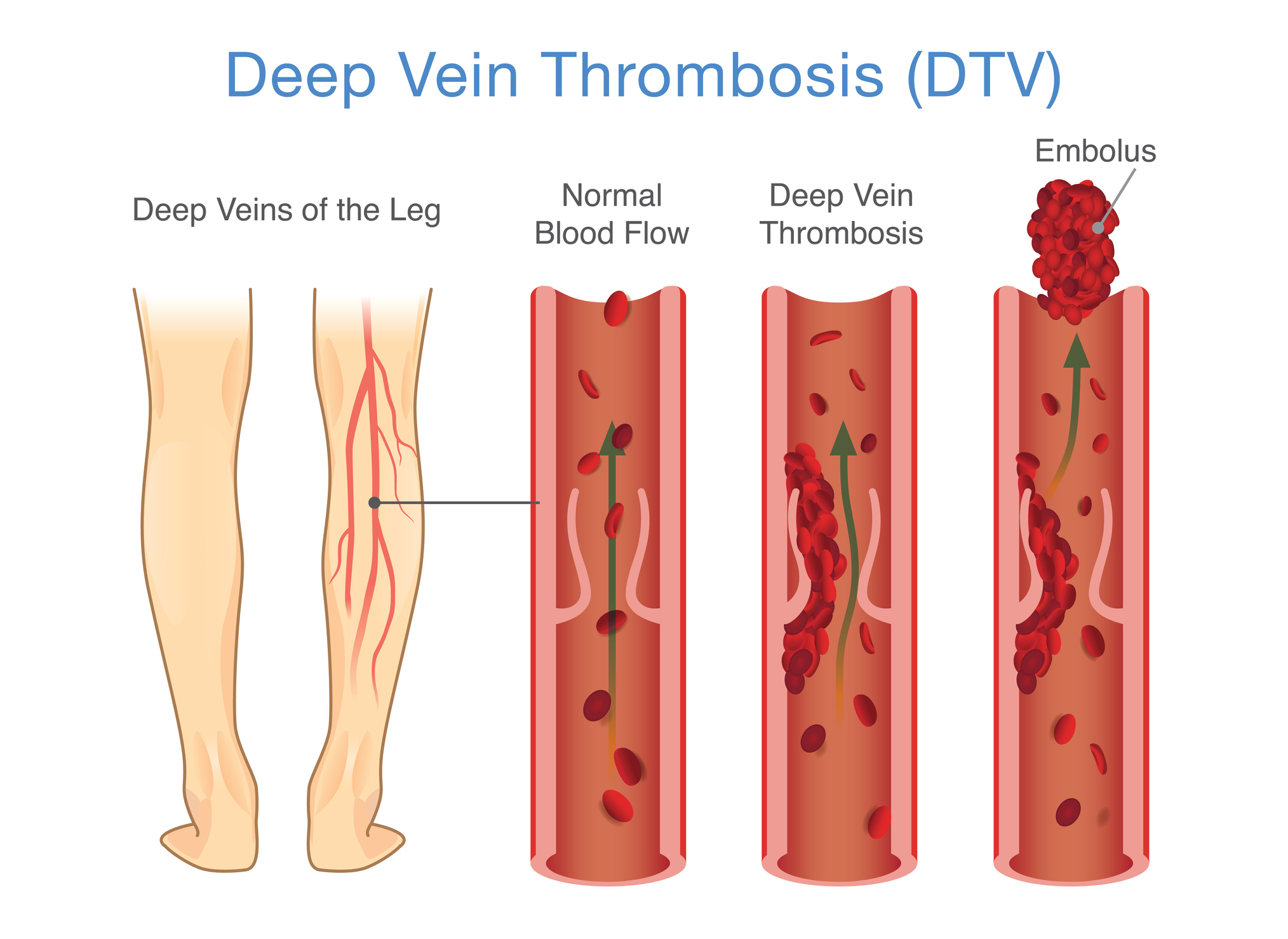One of the greatest health problems that most people know very little about is getting national attention as the Centers for Disease Control and Prevention raises awareness about life-threatening blood clots. “Stop the Clot, Spread the Word” is a public campaign to educate people about thrombosis; a preventable condition that affects as many as 900,000 Americans each year. Blood clots kill more people each year than breast cancer, AIDS and motor vehicle accidents combined, according to a recent Everyday Health report.
Deep vein thrombosis (DVT), in which blood clots form in one of the large veins in an arm or leg, is a major focus of the campaign. DVTs can travel from one of the limbs to the lungs, heart or brain leading to a pulmonary embolism, a heart attack or a stroke. The most common risk factor for developing a blood clot is hospitalization following surgery or injury that requires periods of immobility. According to the CDC, half of thrombosis occurs during or within 3 months following hospitalization.
Cancer patients are also at increased risk for developing blood clots; some types of cancers secrete proteins that can make patients more susceptible to thrombosis. Cancer treatments may also increase the risk of clotting. Research is ongoing to learn more about why cancer patients account for an estimated 20 percent of incidences of blood clots.
Other risk factors for developing blood clots include a family history or inherited clotting disorder, prolonged sitting, being overweight, smoking, birth control or hormone replacement therapy or a serious medical condition such as diabetes, heart or lung disease.
Symptoms of blood clots include leg swelling, calf pain, sudden shortness of breath and chest pain. If you or a loved one experiences any of these symptoms seek medical care immediately. Older adults, especially seniors with pacemakers or other in-dwelling devices, are also more likely to develop a blood clot in the upper or lower extremities. If detected early, blood clots can be treated with blood thinners or thrombolytics to dissolve existing clots. In some cases, surgery may be required. Learn more about blood clots by following this link to the Mayo Clinic website.






Add Your Voice
0 Comments
Join the Discussion